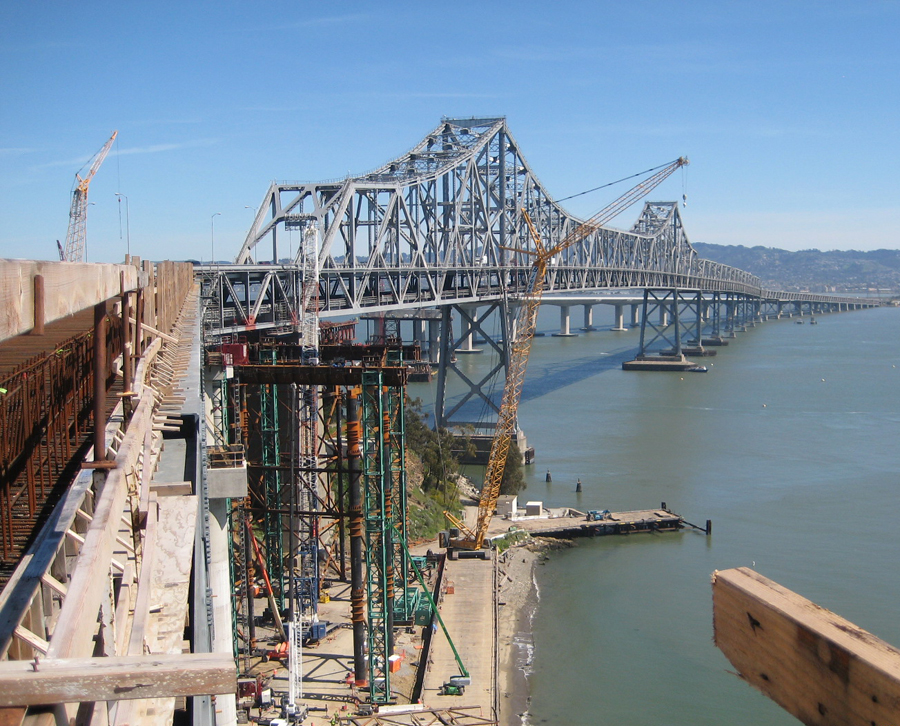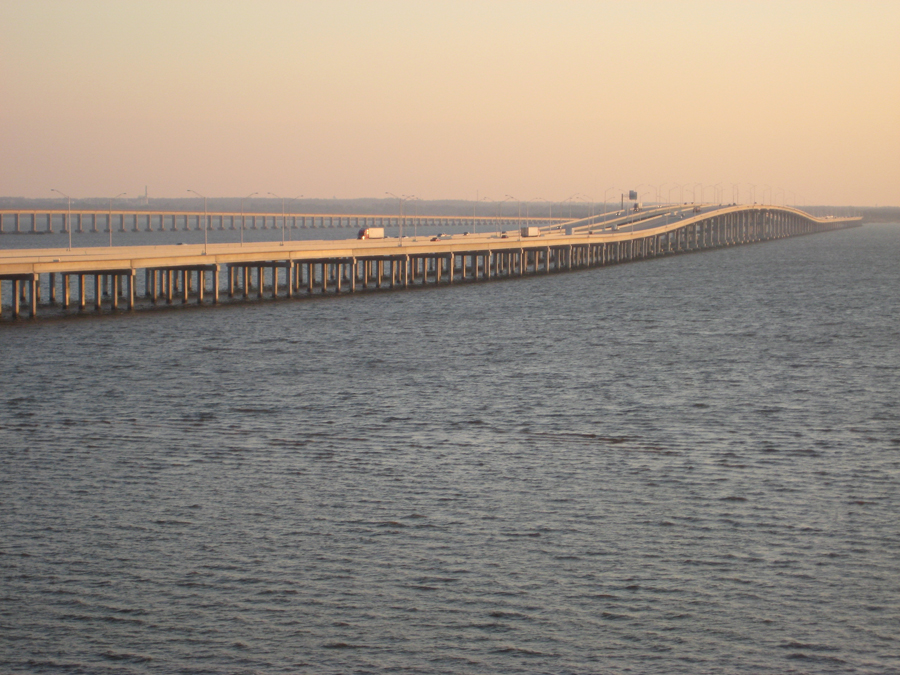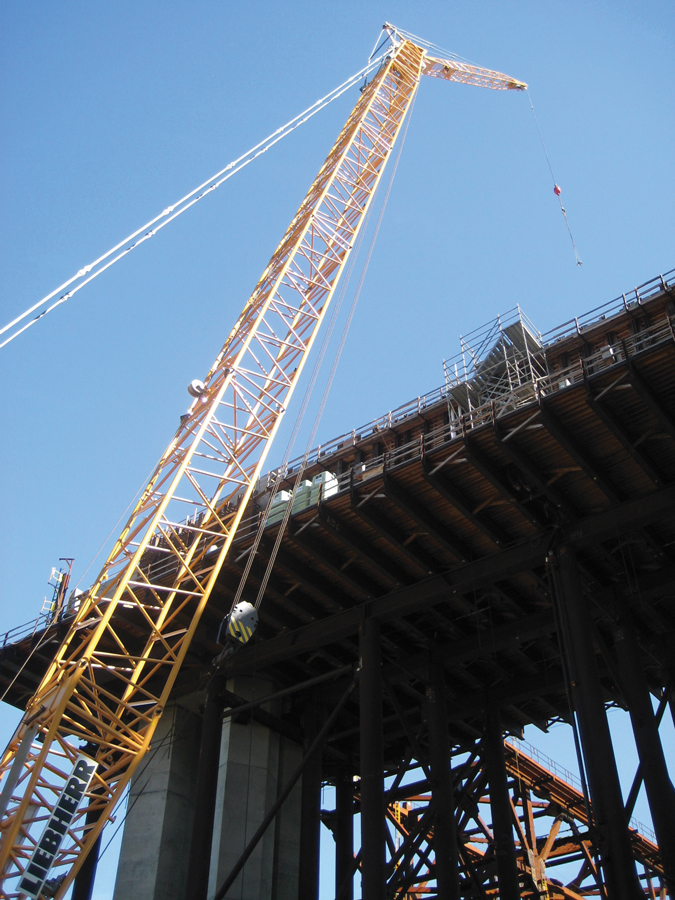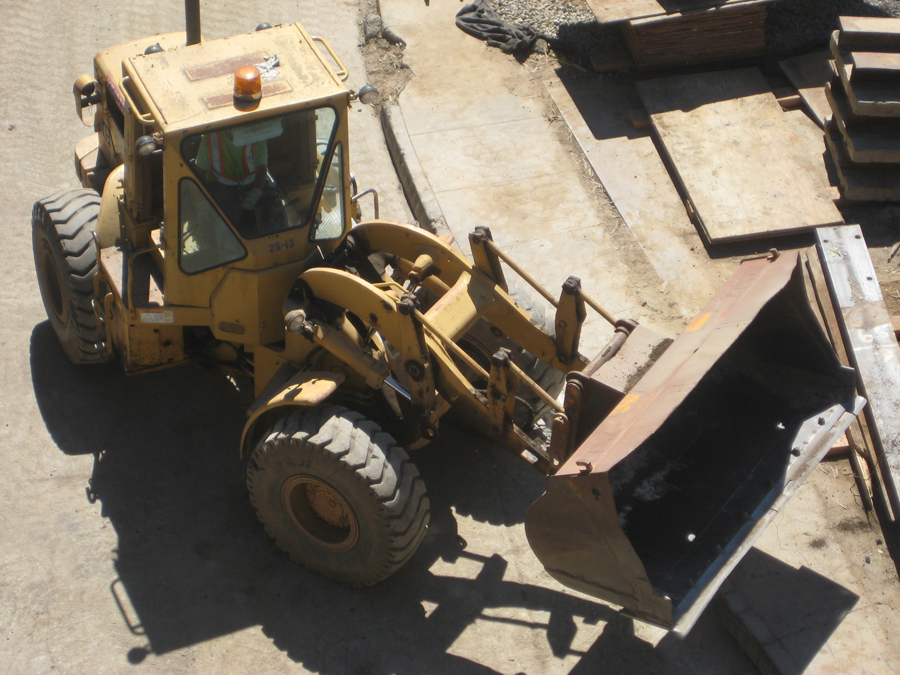U.S. Department of Transportation
Federal Highway Administration
1200 New Jersey Avenue, SE
Washington, DC 20590
202-366-4000
Focus
| Accelerating Infrastructure Innovations |
Publication Number: FHWA-HRT-09-016
Date: August 2009
Printable Version (.pdf, 0.2 mb)
After Hurricane Ivan destroyed the I-10 Escambia Bay Bridge in Florida in 2004, the westbound bridge reopened to two-way traffic in 17 days and the eastbound bridge reopened in 63 days, allowing for normal traffic separation on the bridge to resume. In California, meanwhile, the local media declared it "A-Maze-ing" in 2007 when the San Francisco Bay Area's freeway interchange known as "The Maze" completely reopened to traffic 26 days after a gasoline tanker truck fire destroyed the interchange bridge. From coast to coast, accelerated construction practices are cutting project schedules from years to sometimes mere weeks or days, resulting in reduced traffic congestion and delays, increased mobility, and improved customer satisfaction.
A 2009 Domestic Scan of Accelerated Construction Practices sponsored by the American Association of State Highway and Transportation Officials (AASHTO) and the Federal Highway Administration (FHWA) documented case studies that demonstrate how projects can be successfully delivered much more rapidly. "The goal of the scan was to focus on construction practices that are underlying fundamentals for successfully accelerating construction work processes, as well as those management practices that provide the environment to enable accelerated construction," says scan team co-chair Chris Schneider of FHWA.
 |
Accelerated construction practices being used as part of California's San Francisco-Oakland East Bay Bridge project include a planned replacement of a 91-m-long (300 ft) double-deck section of the bridge's East span over Labor Day weekend in September 2009. |
The scan team included representatives from FHWA, State transportation agencies, a State turnpike authority, and academia. In March 2009, team members visited Jacksonville and Pensacola, Florida; Birmingham and Montgomery, Alabama; Houston, Texas; Salt Lake City, Utah; and Sacramento and Oakland, California, to learn about best practices for accelerating construction projects. Both pavement construction and bridge construction projects were studied. Discussions on the following topics were held with transportation agency staff, consulting engineers, contractors, and suppliers:
 |
The new I-10 Escambia Bay Bridge in Pensacola, FL. The bridge was reconstructed in 63 days after being destroyed by Hurricane Ivan in 2004. |
 |
Best practices highlighted by the accelerated construction scan include success stories in the areas of partnering, design, planning, and contracting strategies. |
"The scan opened my eyes to many ways to successfully deliver a project even when the schedule must be compressed," says team member Clifford Schexnayder of Arizona State University. In addition to examining such emergency projects as the I-10 Escambia Bay Bridge in Florida and California's reconstruction of "The Maze" in Oakland, the team looked at planned projects, where an acceleration strategy was selected intentionally by the transportation agency to minimize disruption to highway users. "Many of the transportation departments we visited told us that they have taken the lessons learned from their emergency accelerated projects and are now applying them to other projects," noted Schexnayder. The planned projects studied included the rehabilitation of the I-15 Devore Corridor in California. The California Department of Transportation analyzed four road closure scenarios for this high-traffic corridor prior to construction to find the most economical option and to ensure that schedule, traffic impact, and agency costs were all considered.
Team members also found in talking with Utah Department of Transportation (UDOT) staff that the agency has gone beyond emergency and planned projects to embrace a program approach to accelerated construction. The program approach allows UDOT to more efficiently accelerate similar project types, such as bridge construction. UDOT's Accelerated Bridge Construction program has completed 17 projects involving 80 bridges, some of which disrupted traffic for only a weekend.
The scan's key findings include a range of best practices in the areas of partnering, design, planning, and contracting strategies. In all of the case studies examined, partnering proved to be a critical element. "For a project to succeed, it is important for all team members, including transportation agency staff, contractors, and materials suppliers, to demonstrate a high level of attention to detail and be committed and empowered to resolve issues at the lowest level," says Schneider. "Goals of the team members should also be aligned." In the area of design, meanwhile, project designers should review the opportunities available to remove barriers to acceleration. For example, material availability and handling logistics should be considered in the early stages of design, as contractors must be able to procure all necessary materials promptly. "Consideration of constructibility is very important," noted Schexnayder. Using a design that allows for repetition of activities also helps to accelerate the work.
 |
A rubber tire loader in action during the construction of the San Francisco-Oakland East Bay Bridge project in California. |
Speed is also achieved by planning work that can be done concurrently and attacking a project on multiple fronts. A detailed execution plan is critical. This plan should be updated regularly, with materials suppliers and fabricators included in the process. Contingency plans that address possible impediments to the project must also be prepared.
Another key to a successful project is the contracting strategy. The contracting method needs to be aligned to the project's technical requirements, including the time allotted for completion, type of work, traffic conditions, and site conditions. Such strategies as design-build contracting or the construction manager/general contractor (CMGC) approach can facilitate both innovation and acceleration. Using CMGC allows an agency to participate in the project's design phase, for example, while obtaining critical constructability input from the contractor.
Team members noted that accelerated construction means championing a new business model of serving the public. "When a transportation department involves the community and local authorities and is able to align their goals with the project goals, accelerated construction can not only succeed but can reduce the overall costs to the community and improve customer satisfaction," says Schneider.
To learn more about the accelerated construction practices domestic scan, contact Chris Schneider at FHWA, 202-493-0551 (email: christopher.schneider@fhwa.dot.gov). The scan team's final report, Domestic Scan of Accelerated Construction Practices Scan 07-02, will be available online at www.trb.org in December 2009 (search under "NCHRP 20-68A, U.S. Domestic Scan Program"). Information on accelerated construction is also available by contacting Rob Elliott in the FHWA Resource Center, 404-562-3941 (email: rob.elliott@fhwa.dot.gov), or visiting www.fhwa.dot.gov/construction/accelerated.